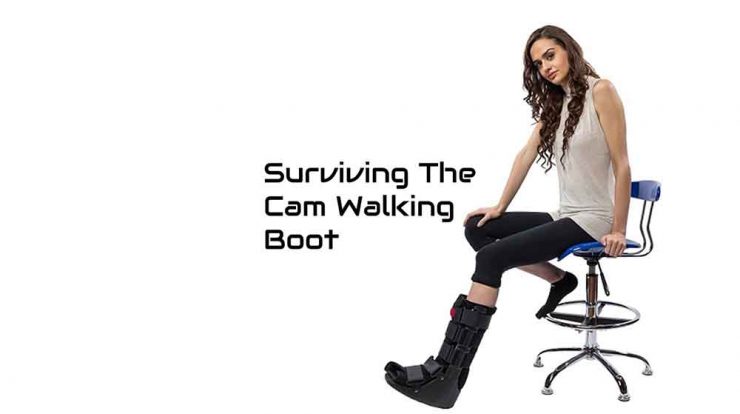CAM (Controlled Ankle Motion) Walker is an alternative to the traditional plaster de Paris for a broken or sprained leg. It is made of hard shell and soft material inner liner. People use it to immobilize their ankles during the recovery period.
Few years ago, I had ankle surgery. When I woke up from coma, I was worried that I would find my leg in a cast. I knew from my friends what is linked to it: it is itchy, it is uncomfortable and it is heavy. Luckily, I could skip it and have my leg directly in a CAM Walker. During the next 6 weeks, I could evaluate its strengths and weaknesses, which is the basis of this design critique.
CAM Walker is a product designed for people who have problems with walking. It is also fully accessible, which I will try to prove by analyzing it against 7 characteristics defining the accessible product: utility, usability, accessibility, desirability, affordability, viability and compatibility.
This product is prescribed by doctors for temporary use, till their leg will be healed. Though it looks bulky and is not visually pleasing, it does what it is supposed to do. It is important to notice that it might require use of another assistive technology – crutches. Together, they allow users to achieve their goals (usability) and meet user needs – to walk independently (utility). The cost of CAM Walker is not very high – in my case, it was covered by the insurance. However, it can be bought online for less than $100 dollars. It is considered affordable, as it allows its users for a better comfort than traditional cast. It is definitely compatible with crutches or wheelchair (both personally tested!). Moreover, it is very easy to put it on – it is sufficient to use a few straps to attach it to the leg.
This product has many advantages, however, no one who ever had to use CAM Walker likes it enough to wear it with satisfaction and pleasure. Even though CAM Walker allows its users to take part in the social life, it is also a constraint. It is very hard to climb the stairs using it. Fresh snow, uneven surface suddenly seems to be dangerous and threatening. This boot is very heavy – it is physically exhausting to lift a leg wearing it. Some activities, involving more free movement, like dancing, jumping or quicker walking, are not possible.
It just feels like it was a minimum viable product (“a version of a product with just enough features to satisfy early customers and provide feedback for future product development” Wikipedia) rather than something which users would be satisfied to wear.
To sum up, in my opinion, CAM Walker is a perfect example of a device created within the medical model of disability – it fixes a problem, treats a disable person like a patient and offers individualistic treatment. In a way, as a person who used it, I accept it and I hope that as a medical device, CAM Walker will go through further iterations and will be lighter, will look prettier and will allow its users for more without losing its medical value. However, thinking of the social model of disability, I would love to have the world made easier for people who have to be careful while moving with even sidewalks, elevators and streets with curb cuts. This would benefit not only disable persons, but simply everyone.
PS. The featured picture is taken from this site.
